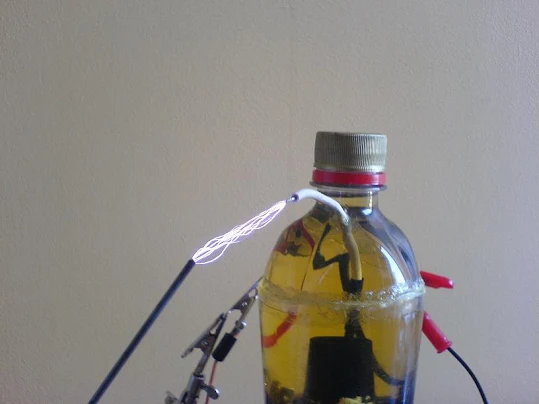High Voltage Generator (Power Supply) with 555 timer ignition coil driver IC
High Voltage Generator (Power Supply) with 555 timer ignition coil driver IC
 |
| 555 timer Ignition Coil Driver for High Voltage Generator |
If you are into electronics, there is a chance you have wondered how to generate high voltage because high voltage arcs are fun to watch or possibly for another reason. Here I show how a cheap and easy way to generate high voltage AC with an ignition coil from a car or bike engine and a rather basic driver circuit built around the ever timeless 555 timer IC.
An ignition coil is possibly even more easy to come by than a flyback transformer, and much more fun for a newb. Unlike the common modern flyback, ignition coils aren't rectified and provide AC which can be used to make a plasma globe out of any low pressure tube, such as a lightbulb. AC will also allow ignition coils to be used in HV multipliers too, which makes them even more useful.
Pretty much just like a standard flyback driver, except running at a very high duty ratio (95%) and only 400Hz. I didn't include potentiometers to adjust frequency or duty ratio since ignition coils are so alike, and the current values were found to work well. I made the circuit while using a "high power" coil, but any coil will work. My coil's primary has an inductance of 8.8mH, and about 3.5 ohms of DC resistance. Since the primary resistance is so high it will limit current and protect the mosfet. At 30V the max DC current will be 8.6A, and with 8.8mH of inductance the on-time will have to be t = (I * L) / U in order to get the most current flowing through the primary. Since running high duty cycles had little impact on the heating of the mosfet, I chose to run it at 95% and 400Hz, which gives about the required on-time for max power. The funky gate waveform shaper is something I've seen on many flyback based drivers, including some ignition coil drivers. I'm not sure how it would improve anything in regards to power, but it greatly lowers the peak current the 555 has to source. All it does is ensure slow turn on and fast turn off, which are fine in this application. Slow turn-on because the current through the primary can only rise at a certain rate, and fast turn-off because the current must be stopped abruptly for the resulting flyback pulse to be a energetic as possible. Another reason for fast turn-off is the high duty cycle used.
At 35V input you can get 4 cm sparks, suggesting 30-40kV. During my first attempt I tried running it from 50V and using a different circuit, but it arced right through the top cone to the + connector immediately. To correct this I submerged the whole coil in hydraulic mineral oil which prevents arc-overs and arcing through insulation cone. I haven't tried it from 50V again since I have plans for this coil and don't want it ruined. The ignition coil is very loud and intense when sparking, so hearing protection is recommended.



.png)



.png)





.png)

Leave a Comment